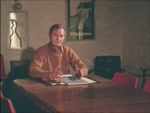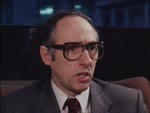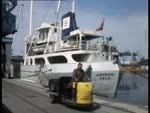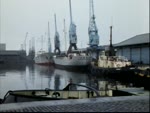CLEARANCES, the
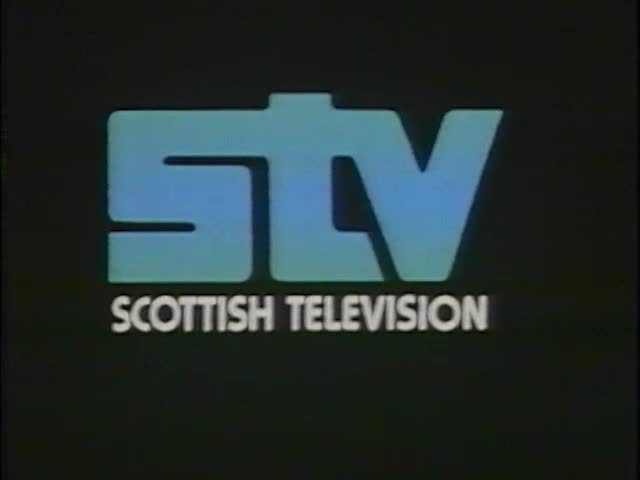
This video is not available to view remotely
Full length video - onsite only
Please read Understanding catalogue records for help interpreting this information and Using footage for more information about accessing this film.
Title: CLEARANCES, the
Reference number: 6126
Date: 1980
Director: d. Patrick Boyle
Producer: Patrick Boyle
Production company: Scottish Television
Sound: sound
Colour: col
Fiction: non-fiction
Running time: 52.55 mins
Description:
Television documentary detailing the history and repercussions of the Highland Clearances. From 1760 - 1860 wealthy landlords drove tens of thousands of clanspeople from their homes. Crofters whose ancestors were affected, historians, and present-day landlords give their opinion of these events.
See also out-take material from separate acquisition - rushes and transcripts of full interviews, script, treatment and biographical information. Selected for retention primarily for the oral history value of respondents contributions.
Credits:
presenter Fulton Mackay
w. Eric Cregeen, Patrick Boyle
research Moira Allison, Bob Duncan
p. ass. June Laurie
songs from 'Run Down' performed by the children of Farr Secondary School
m. John Barlow
Gaelic singer Ishabel MacDonald
camera Harry Bridges
ass. camera Kelvin Gray
sd. Clive Wood
dubbing Tim Amyes
film ed. Pat Doherty
ass. film ed. Fergus Mackinnon
[Filming dates April - May 1979]
Shotlist:
PART 1
introductory sequence featuring Fulton Mackay reading out the order for clearance given by the government in a deserted Glen, some negative opinions of the Clearances (one man comparing it to wartime slaughter of the Jews) and some scenic shots and background information on the Clearances (2.00) commentary explains why the issue of the Clearances is still sorely felt because land ownership in North West Scotland is still an issue, intercut with newspaper cuttings (2.33) visuals and aerials of various Highland Glens affected during the Clearances (Glen Cannich, Strath Glass Glen, Glen Moidart, Glen Calby (?), the island of Alba (?), near Mull) (5.01) various local men talk about the ruins that are left, gvs ruins of crofting townships, Angus Henderson tells the story of John McColl at the latter's graveside at Kilchoan, Ardnamurchan (6.20) Jonathon McDonald, a hotelier on Skye repeats a story involving croft burning (7.21) another man explains using the name 'Laird' awakens memories passed down from father to son (7.39) statue of 1st Duke of Sutherland looming over Glen of Strathnaver, Sutherland; views of ruins at Rossol (?) Fulton Mackay tells story of Patrick Seller who forced people from their homes and burned their homes (10.23) Angus Henderson speaks about Strathnaver Clearance (10.57) exts Bettyhill School, Strathnaver; ints art classroom where children depict Clearances, ints music room where they perform musical written by teachers on subject of Clearances (13.24) view of deserted glens and coastal bay (unid) (14.04) man tells of the hardship faced by those forced from the Glens to coastal areas, the inadequate 'lots' of land they were resettled on (14.48) such as the Waternish Peninsula, view of same with cliffs (15.24) Fulton Mackay to camera, telling of inhabitants enforced transport overseas, intercut with [b&w] drawings of people leaving on ships etc (16.02) Donald Angus MacDonald tells his family's story, at the croft his grandparents escaped to at Loch Eport, North Uist; shot of farmland at Sollas on Uist (where they were evicted from), view of graveyard (16.57) John Macdonald recounts the story of the clearance of Sollas involving burning of crofts (18.22) ints croft, i/v Donald Angus MacDonald, who finds the whole thing upsetting (18.57) shot of Fulton Mackay to camera, telling the story of a Clearance on Isle of Mull and how the burial ground was desecrated and used stones for making wall still visible today (20.02) John McDonald tells of the savagery of the latter stages of the Clearances (20.43) aerial views Tobermory where Fulton Mackay sums up the story so far END OF PART ONE (22.02) 826ft
PART 2
title overlaid on aerial shot of loch and castle, as Fulton Mackay explains the Clan system (1.02) c/u painting of clan chief (1.11) ints ruined castle, Fulton Mackay explains the reasons behind the disintegration of the Clan structure (2.21) shot of fishing boat on loch, man mending fishing net and men sorting out fish in harbour (2.42) gvs fishing villages on West Coast, pan of Tobermory (3.11) shots of men cutting kelp by hand with scythe, digger gathering up kelp on seashore (3.32) ints seaweed drying factory showing processes involved (3.54) view of Highland glen, Fulton Mackay speaks about the decline of the Clan gentry and how some left for the American colonies, taking their tenants with them (this well before the time of the Clearances) (5.02) gvs present day crofters at work on land, shots of them cutting peat (6.08) ints study, i/v Father Anthony Ross (Lord Rector of Edinburgh University) who discusses the way crofting is romanticised and of his own experiences living on a croft (7.11) [possibly staged shot] ints blacksmith inside croft (7.27) i/v continued (community, storytelling, shared traditions) (8.04) ints house on Skye, informal ceilidh with singing and storytelling (9.09) Howmore Church, Uist - ints precentor leads the congregation in singing Gaelic psalms (9.55) gvs agricultural processes including seed sowing and gvs sheep farming - the commentary explains why sheep farming became a viable option for the Lairds (10.59) shot of James Hunter, historian and journalist, walking in Glen, he argues the crofters point of view (land as communal asset) (12.05) brief exts Stirling University, ints study where Roy Campbell, Professor of Economic History justifies Laird's position in the Clearances, intercut with gvs landscape (13.00) wide pan of train on Inverness to Wick line, ints cabin where Fulton Mackay makes a case for the landowner being an innovator, bringing trains to Highlands and the point that being an absentee landlord (14.46) old b&w drawings of crofters, the potato blight (15.31) i/v man recollects stories passed down about the potato famine (15.54) drawings (16.08) Professor Campbell gives reasons for famine, the relief landowners gave and how it couldn't go on forever, how landowners wanted a permanent adequate standard of living and this could only be done with smaller population (17.01) i/v Father Anthony Ross who bemoans the way in which people were forced to leave their homes (17.42) i/v James Hunter, talks about the sense of betrayal crofters felt as their leaders turned against them (17.59) marching pipes and drums at International Gathering of the Clans of 1977 (18.30) i/v Albany Herald Sir Ian Moncrieff, who argues there were good chiefs who did a lot to support their tenants at personal cost; i/v Father Anthony Ross (20.30) view Argyll landscape (20.39) ints beautiful drawing room where Eric Creegan of the School of Scottish Studies recounts history of Dukes of Argyll (21.02) exts ruin of factory at Clunie (Clunery?) which employed wives and daughters of tenants (21.14) aerial shot Crinan Canal (21.29) i/v continuation of historical background to Clearances (how one bad landlord could enforce the selling of land with consequences for population who were then cleared) (23.23) i/v James Hunter who views the Clearances as a cultural and economic disaster, intercut with b&w drawings (24.02) shot of present day crofters at work on the land (24.51) journalist Brian Wilson argues that land policies continue to disadvantage the majority of ordinary people and favour a minority of landowners, intercut with aerials Highland landscape, ruins of old buildings visible (25.54) i/v Ian Moncrieff who argues that Clearances should not be used for present day political means (27.11) Fulton Mackay sums up, mentioning the young people of the Highlands who leave for education and jobs elsewhere (28.49) ecs, overlaid on shots of schoolchildren singing musical about Clearances and visuals Highland landscape (30.53) 1158ft


